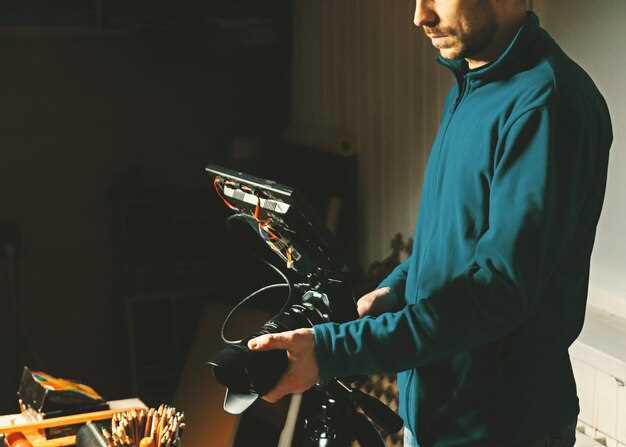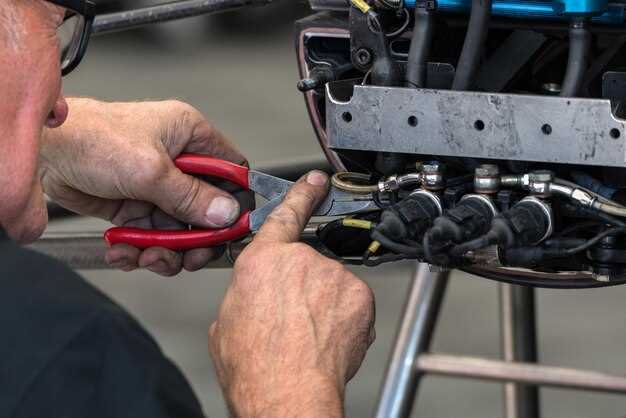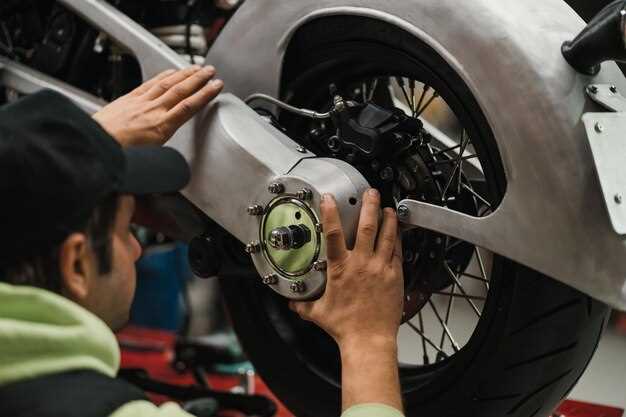
Wiring a motorcycle from scratch can be an exhilarating yet challenging experience for enthusiasts and builders alike. Whether you are creating a custom bike or restoring a classic model, the electrical harness is a vital component that demands attention and precision. Understanding the fundamentals of motorcycle wiring will not only enhance your technical skills but also ensure that your bike operates smoothly and safely.
When embarking on this journey, it’s crucial to establish a clear plan. Start by selecting high-quality components and materials suited for your specific model. A well-organized wiring harness is essential; it serves as the backbone of your motorcycle’s electrical system, connecting components such as the ignition, lights, and battery. Choose a custom wiring harness that aligns with your build, as it allows for flexibility in routing wires and integrating aftermarket accessories.
In this article, we will explore essential tips and techniques that will guide you through the process of wiring your motorcycle efficiently. From choosing the right gauge wire to understanding circuit design, this guide will equip you with the knowledge needed to create a reliable and functional electrical system. Get ready to dive into the world of motorcycle wiring, and transform your vision into reality.
Wiring a Motorcycle from Scratch: Tips and Techniques

Creating a custom motorcycle wiring harness requires careful planning and execution. To start, gather all necessary components such as wires, connectors, switches, and relays. Selecting the right gauge of wire is essential; typically, 18-20 gauge is ideal for most wiring applications on motorcycles.
Begin by designing a wiring diagram specific to your motorcycle’s model. This diagram will serve as a blueprint, ensuring that every electrical component is properly connected. Use software or paper to sketch out the layout, clearly marking each component’s function.
When constructing your wiring harness, organize wires systematically. Group them according to their purpose (e.g., power, ground, signals). Utilize color-coding to simplify identification and minimize errors during installation. For instance, use red for positive connections and black for grounds.
Ensure all wire connections are secure by using quality connectors. Crimp or solder connections as necessary, and cover them with heat shrink tubing or electrical tape to prevent exposure to moisture and dirt. Proper insulation is crucial in extending the lifespan of the electrical system.
After wiring the harness, implement thorough testing before final installation. Check for continuity in each circuit and verify that all components function correctly. This stage is critical to identifying potential shorts or faulty connections early on.
Once tested, carefully route the harness through the motorcycle frame. Avoid areas that experience high heat or constant movement, which could lead to wear and damage. Secure the harness using zip ties or clamps to prevent movement and vibration.
Finally, label all connections clearly to simplify future maintenance or repairs. This attention to detail will not only enhance the aesthetics of your custom motorcycle but also improve its overall reliability.
Choosing the Right Components for Your Custom Wiring Harness
Creating a custom wiring harness requires careful selection of components to ensure reliability and performance. The first step is selecting the appropriate gauge of wire. Thicker wires (lower gauge numbers) are suited for higher current applications, while thinner wires (higher gauge numbers) are adequate for low-power connections. Always refer to a wiring diagram for guidance on current requirements for each circuit.
Next, consider the type of insulation. Different environments require different insulation materials. For example, heat-resistant insulation is essential near engine components, while moisture-resistant insulation is vital for areas exposed to the elements. Polyolefin and PVC are common choices, but always choose materials that can withstand the specific conditions your motorcycle will encounter.
Connectors play a crucial role in a wiring harness. Selecting high-quality, weatherproof connectors reduces the risk of corrosion and connection failures. Ensure that connectors are rated for the appropriate voltage and current levels to avoid overheating and potential hazards. Pay attention to the locking mechanisms as well, as secure connections help maintain integrity in harsh conditions.
Fuses and circuit breakers are essential for protecting your wiring harness. Choose the correct type and rating to prevent overloads from damaging components. Incorporating automotive fuses can add an extra layer of protection, especially in high-current circuits. Ensure that the fuse holder is easily accessible for quick replacements.
Finally, consider using heat shrink tubing and cable management solutions. Heat shrink tubing provides insulation and strain relief, which is important in protecting connections. Cable ties or braided sleeves can help maintain organization and prevent chafing between wires. Proper cable management not only enhances aesthetics but also improves the longevity of your wiring system.
By thoughtfully selecting each component of your custom wiring harness, you can ensure a robust and efficient electrical system that meets your motorcycle’s demands.
Step-by-Step Guide to Routing Wires and Connectors

Routing wires in a custom motorcycle build is crucial for ensuring reliability and functionality. Proper planning and execution will enhance the safety, appearance, and performance of your bike. Follow these steps for a seamless wiring process.
1. Plan Your Wiring Layout: Before starting, sketch a wiring diagram. Identify all components such as headlights, taillights, ignition, and any accessories. This will help visualize the wire paths and ensure all connections are accounted for.
2. Choose the Right Gauge Wire: Select wire gauge based on the electrical load each circuit will carry. Thicker wires (lower gauge numbers) are required for components that draw more power, while thinner wires can suffice for lighter applications.
3. Gather Connectors and Tools: Stock up on quality connectors that suit your application. Crimp connectors, solder sleeves, and heat-shrink tubing are popular choices. Additionally, have on hand wire strippers, crimping tools, and a multimeter.
4. Measure and Cut Wires: Cut wires to the appropriate lengths according to your wiring diagram. Leave some extra length to accommodate any changes or adjustments during installation.
5. Route the Wires: Begin routing wires along predefined paths. Avoid sharp edges and areas that might expose wires to heat. Secure the wires using zip ties or clamps, ensuring they are tidy and organized to prevent tangling and chafing.
6. Make Connections: Connect wires to their respective components using the chosen connectors. If soldering, ensure a solid joint and cover with heat-shrink tubing for insulation. Make sure to follow color coding to maintain consistency.
7. Test Connections: Before finalizing everything, use a multimeter to test all connections. Ensure continuity and proper voltage levels. This step helps identify any miswirings before sealing everything up.
8. Finalize and Secure Wiring: Once tested, secure all wiring in place using zip ties, clamps, or protective sheathing. Double-check that nothing is loose, pinched, or exposed to wear.
9. Install a Fuse Box: Integrate a fuse box within your wiring system. This adds a layer of protection to your components by preventing electrical overloads. Position the fuse box in an accessible location for easy maintenance.
10. Conduct a Final Inspection: Perform a thorough inspection of the entire wiring layout to ensure everything aligns with your diagram. Check for any potential issues, such as frayed wires or improper connections.
By carefully following these steps, you will successfully route wires and connectors for your custom motorcycle build, leading to a reliable and efficient electrical system.
Troubleshooting Common Electrical Issues in Custom Motorcycles
Custom motorcycle wiring can be a complex challenge, and unexpected electrical issues may arise. Below are some common problems you might encounter and practical solutions to troubleshoot them.
- Dead Battery
- Check the battery voltage with a multimeter. A reading below 12.4 volts may indicate a bad battery.
- Inspect battery connections for corrosion or looseness. Clean and tighten as necessary.
- Ensure the charging system is functional by testing the voltage while the motorcycle is running. It should be around 13.5-14.5 volts.
- Inconsistent Spark
- Examine the ignition coil and spark plug connections. Ensure they are tight and clean.
- Check for broken or damaged wires in the ignition circuit.
- Test the coils for resistance using a multimeter; refer to manufacturer specifications.
- Faulty Lights
- If headlights or turn signals are malfunctioning, inspect the bulbs first. Replace any that are burnt out.
- Check the wiring harness for damaged insulation or loose connections.
- Verify that the ground connections are secure to prevent voltage drops.
- Electrical Shorts
- Identify and trace wires for signs of wear or exposure. Repair or replace as necessary.
- Use a multimeter to test for continuity in suspected shorted wires.
- Inspect connectors for moisture or dirt; clean and reseal if required.
- Fuses Blowing Frequently
- Determine the source of the short circuit by disconnecting components one at a time until the issue is isolated.
- Check for correctly rated fuses; using higher-rated fuses can cause wires to overheat.
- Review the wiring layout for overloads or misplaced connections. Rectify any mismatches.
Regular maintenance and a methodical approach to troubleshooting can prevent many electrical issues in custom motorcycles. Always consult wiring diagrams and manufacturer specifications as you work through each problem to ensure accurate results.
